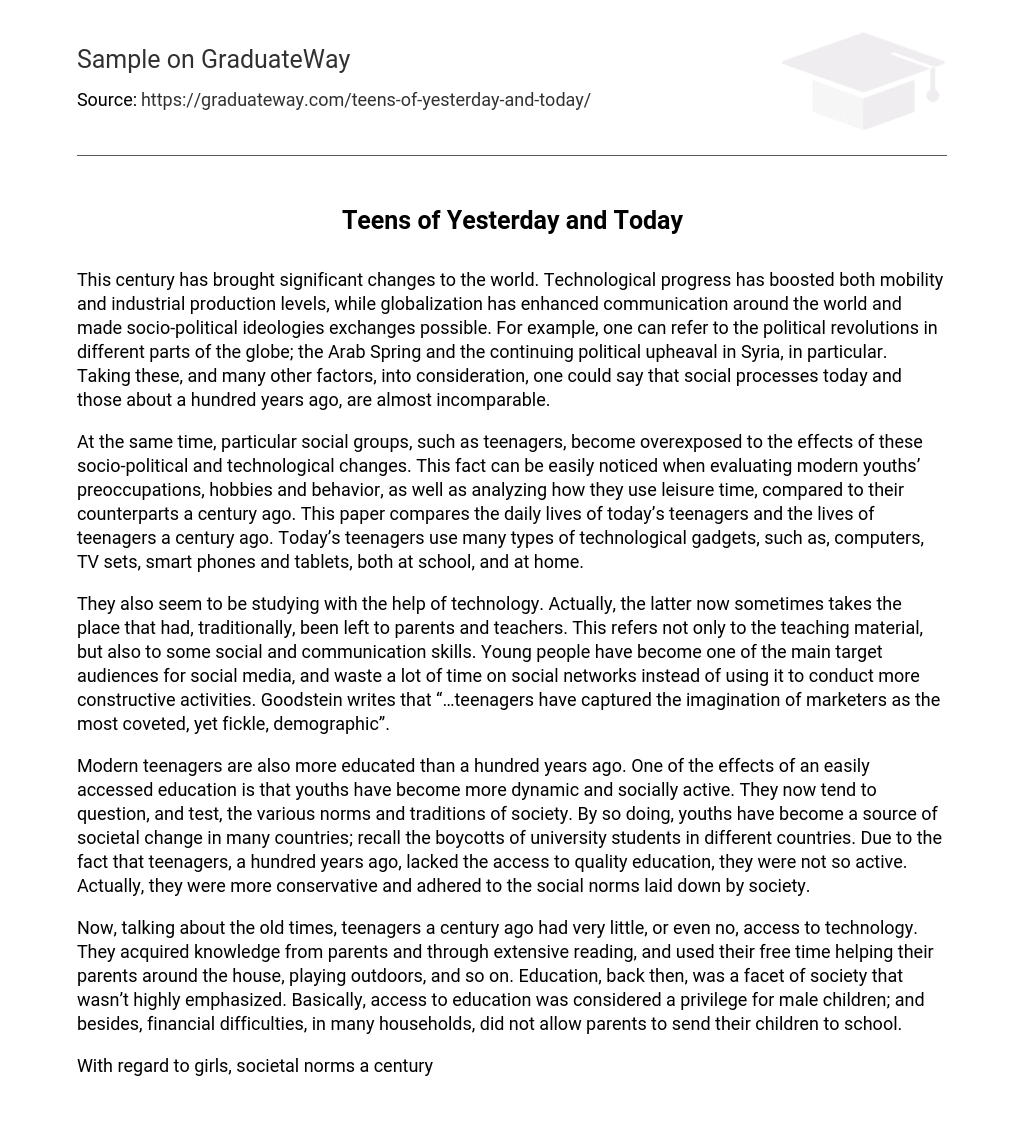The world has undergone significant changes in this century, with advancements in technology leading to increased mobility and industrial production. Globalization has also played a role in enabling global communication and the exchange of socio-political ideologies. This can be seen in political revolutions such as the Arab Spring and ongoing conflicts like those in Syria. Taking into account these factors and many others, it is clear that there is a noticeable contrast between current social processes and those from a hundred years ago.
Various social groups, including teenagers, are significantly affected by socio-political and technological changes. This impact is evident in the concerns, preferences, and behaviors of young people today compared to those from a century ago. In this article, we examine how modern-day teenagers’ daily routines differ from their counterparts from a hundred years ago. Today’s teenagers incorporate computers, TV sets, smartphones, and tablets into their educational pursuits and home life.
According to Goodstein, technology is playing an increasing role in education by acting as a substitute for parents and teachers. It provides learning materials as well as teaches social and communication skills. This trend is particularly noticeable among the younger generation who heavily rely on social media platforms. However, this reliance often hinders their engagement in more productive activities. Marketers consider teenagers to be both desirable and unpredictable consumers.
Modern teenagers are more educated than their counterparts of a hundred years ago, resulting in increased dynamism and social activism. This easy accessibility to education has empowered young people to question and challenge societal norms and traditions, thus becoming agents of change. This can be seen in the various boycotts organized by university students across different countries. Conversely, teenagers of the past lacked access to quality education, leading them to be less active and more conservative in their adherence to established social norms.
In the past, teenagers had limited or no access to technology. They gained knowledge from their parents and by reading extensively. They spent their free time assisting their parents with household chores and playing outside. Education was not a prominent aspect of society during that time. It was seen as a privilege for boys, and financial constraints often prevented children from attending school.
In the past, societal norms restricted girls from having the same roles as boys. They were primarily assigned domestic responsibilities, as women were expected to handle household management. However, recent global movements supporting females have led to positive transformations for girls. Consequently, teenage girls now have the liberty to pursue opportunities and professions that were traditionally exclusive to young men.
According to Maccoby, parents are more likely to encourage girls rather than boys to attend college. This suggests that there is now greater gender equality among teenagers compared to a hundred years ago. Consequently, notable differences exist between today’s and past teenagers. Current youths have a better grasp of technology and possess higher levels of education compared to previous generations. Additionally, modern teenagers also enjoy the advantages of increased gender equality in terms of accessing opportunities.





